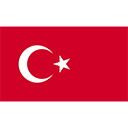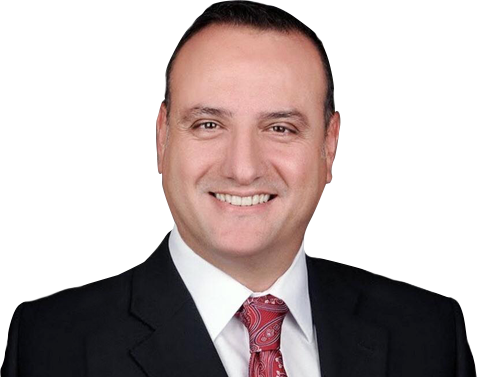Duodenojejunal Bypass
Duodenojejunal Bypass-Sleeve gastrectomy (DJB-SG) operation is very similar with Biliopancreatic Diversion-Duedonal Switch (BPD-DS) operation anatomically. Therefore, it may be called as “short duodenal switch” as well.
Basically, the stomach is made like a longitudinal tube in Duodenojejunal Bypass-Sleeve gastrectomy (DJB-SG) operation as well (1st Step Sleeve Gastrectomy).
Pylorus muscle is preserved after this procedure and duedonum is separated from the stomach (2nd stage Duodenal Switch).
Finally, a small intestine part which is very shorter than Biliopancreatic Diversion operation is bypassed and connected into the pylorus (3rd Step Duodenojejunal Bypass).
Duodenojejunal Bypass-Sleeve Gastrectomy (DJB-SG) operation retricts absorbtion from small intestines and reduces gastric volume partially like BPD-DS.
|
Surgery Type |
Gastric Volume |
Absorption Distance |
Pylorus Preserving |
Dumping Syndrome |
Absorption Disorder |
Effect on Weight Loss |
|
BPD |
400-500 cc |
50 cm |
No |
High |
High |
Very High |
|
BPD-DS |
250 cc |
100 cm |
Yes |
Very Less |
High |
Very High |
|
DJB-SG |
150-200 cc |
200-250 cm |
Yes |
Very Less |
Very Lesser |
High |
Duodenojejunal Bypass (DJB) has been applied first by Cohen and Rubino for diabetic patients with lower body mass index in 2007. They has not touched the stomach in this first surgery and applied a short bypass between stomach and small intestine only. Pylorus muscle has been preserved during this bypass procedure and the small intestine pulled from down is connected behind pylorus (Duodenal Switch). They have reported that they see recovery on Type 2 Diabetes findings without any weight loss (Cohen R, Rubino F, SurgObesRelatDis 2007;3: 195-197). Cohen and Rubino have added gastric tubing into this surgery and applied for fat diabetic patients [Cohen R, Rev. Med. Clin. Condes - 2009; 20(5) 698 – 702]. It has been shown with this new form that Duodenojejunal Bypass/Sleeve Gastrectomy (DJB/SG) operation might be applied in an adjustable form according to the patient’s body weight. Different results are reported for control power of Duodenojejunal Bypass/Sleeve Gastrectomy (DJB/SG) operation applied on diabetic patients who are both fat and close to normal weight on diabetes. Kasama from Tokyo (Kasama K, ObesSurg.2009 Oct;19(10):1341-5. Epub 2009 Jul 21.), Navarette from Caracas (Navarette SA, ObesSurg.2011 May;21(5):663-7.) have reported complete recovery on diabetic patients with Duodenojejunal Bypass – Sleeve Gastrectomy. Jiang from China [Jiang FZ, ZhonghuaWeiChangWai Ke ZaZhi.2012 Jan;15(1):36-8. (Article in Chinese)] and Paik KY from India [Paik KY, SurgEndosc.2012 Jun 8. (Epubahead of print)] have obtained a average recovery on non-oebese diabetic patients (diabetic patients who are not fat) with DJB/SG, however patients who are not obese has not lost any weight.
Ferzli from new York has reported that no significant and permanent recovery occurred on diabetic patients whom he applied DJB/SG because of Type 2 Diabetes. Increase on bad cholesterol and decrease on beta cell activities have appeared in majority of these partients (ferzli GS, World J Surg. 2009 May;33(5):972-9.).
No significant power about metabolic effects of Duodenojejunal Bypass – Sleeve gastrectomy (DJB/SG) operation have been revelaed on studies conducted. Results reported have conflicts on effect of the operation on diabetes. Some groups consider Duodenojejunal Bypass/Sleeve Gastrectomy (DJB/SG) surgery superior against Duodenal Switch or Biliopancreatic Diversion which may cause severe nutritional disorder on treatment of Type 2 Diabetes because DJB/SG provides more positive life standards. However, it is generally accepted that Duodenojejunal Bypass/Sleeve Gastrectomy (DJB/SG) operation can not provide sufficient control on diabetic patients whose body weight are close to normal (non-obese diabetic patients).
Duodenojejunal Bypass/Sleeve Gastrectomy (DJB/SG) and Obesity Treatment
Presence of conflicting articles and declarations about effects of Duodenojejunal Bypass/Sleeve gatsrectomy (DJB/SG) surgery on Type 2 Diabetes has caused more assessment of the effects fo the surgery on obesity. Because Duodenojejunal Bypass/Sleeve Gastrectomy (DJB/SG) surgery is the most adjustable surgery according to the body weight of the patient among other surgeries, it is assessed as prominent. PraveenRaj has reported in two different articles that Duodenojejunal Bypass/Sleeve Gastrectomy (DJB/SG) surgery has high efficiency on treatment of obesity and morbid obesity (Raj PP, SurgEndosc. 2012 Mar;26(3):688-92. Epub 2011 Oct 13.),(PraveenRaj P,2012 Mar;22(3):422-6.)
Duodenojejunal Bypass/Sleeve Gastrectomy (DJB/SG) : Advantages on Obesity Treatment
Laparoscopic Roux-N-Y Gastric Bypass is the most common obesity surgery technique applied worldwide. Patients experience difficulties because of Dumping Syndrome after Laparoscopic Roux-N-Y Gastric Bypass. Dumping Syndrome is a condition which starts with intake of certain foods and progresses with sever nausea, vomiting, abdominal pain and syncope attacks. The cause that this condition appears more after gastric bypass is deactivation of pylorus. In fact, Duodenojejunal Bypass/Sleeve Gastrectomy (DJB/SG) surgery preserves pylorus. Because pylorus valve is preserved, no ingredient leakage from small intestine into the stomach in overflow form appears. It provides a comfort life quality which can not be compared with patients who had Roux-N-Y Gastric Bypass. Weight loss of the patients whom Duodenojejunal Bypass/Sleeve Gastrectomy (DJB/SG) surgery were performed is equal with gastric bypass.
Although it provides a weight loss close to Biliopancreatic Diversion (BPD) and Biliopancreatic Diversion/Duodenal Switch (BPD/DS) surgeries, nutritional disorder is significantly less. However, it is known that metabolic control power is less than these surgeries.
Very strong metabolic strength of the operation performed for treatment of obesity or morbid obesity is a positive aspect. However, metabolic problems such as hypertension, diabetes or hyperlipidemia which are seen in obesity appear directly because of obesity. So, rapid and efficient control of obesity cause elimination of these additional diseases naturally or significant recovery. Therefore, the surgery that will be used to treat very obese patients should provide a strong weight loss, high life quality and least nutritional disorder.
Duodenojejunal Bypass/Sleeve Gastrectomy (DJB/SG) operation is a surgery close to ideal which provided these three conditions for morbid obesity. It may be applied in a single session even in super obese patients. It is one of the leading options for patients who had Sleeve Gastrectomy and weight regain has occurred.
Duodenojejunal Bypass/Sleeve Gastrectomy (DJB/SG) : Why?
- It is a pylorus preserving procedure. Therefore, it is called as short duodenal switch as well. Like BPD/DS, pylorus muscle is preserved. Small intestine connection is performed behind pylorus. Uncontrolled passage of content from small intestine into the stomach is prevented.
- Dumping Syndrome is very less. Dumping is not seen because pylorus is preserved.
- It may be adjusted according to the body weight of the patient. Duodenojejunal Bypass/Sleeve Gastrectomy (DJB/SG) may be adjusted according to the patient needs by modifying gastric tube width and length of small intestine bypass. A narrower stomach and a longer small intestine connection are done for patients who are very over weighted. So, gastric volume restriction and more absorption restriction are provided. The opposite may be valid for patients who are slightly over weighted.
- It provides efficient weight loss. Standard Roux-N-Y provides a weight loss equivalent to gastric Bypass operation. If a narrower stomach and longer small intestine distance are applied, this effect increases more. Weight loss may protect its effect for a long period. As well as this strong effect, it provides a good life comfort which can not be compared with standard bypass.
- It causes less Nutritional Disorder. Although weight loosing effect is close to BPD/DS, it causes less absorption restriction which can not be compared with BPD/DS. The actual criteria for absorption restriction is foods and bile flow mix in how long intestine distance. We call this common absorption distance. This common absorption distance is about 50 cm for Standard Biliopancreatic Diversion (BPD). This distance is about 100 cm for Biliopancreatic Diversion/Duedonal Switch (BPD/DS). In fact, because a common absorption with a length of 200 to 250 cm at least in Duodenojejunal Bypass/Sleeve Gastrectomy (DJB/SG) operation, small intestine length is kept. In such long small intestine distance, almost all vitamins and minerals which should be absorbed may be absorbed. Doses and frequencies of drugs that patients should use decrease. When we consider that almost no nutritional disorder appears, patients’ life quality is very high.
Duodenojejunal Bypass/Sleeve Gastrectomy (DJB/SG) is a premium surgery with advantages provided in obesity treatment.
 English
English Turkish
Turkish

